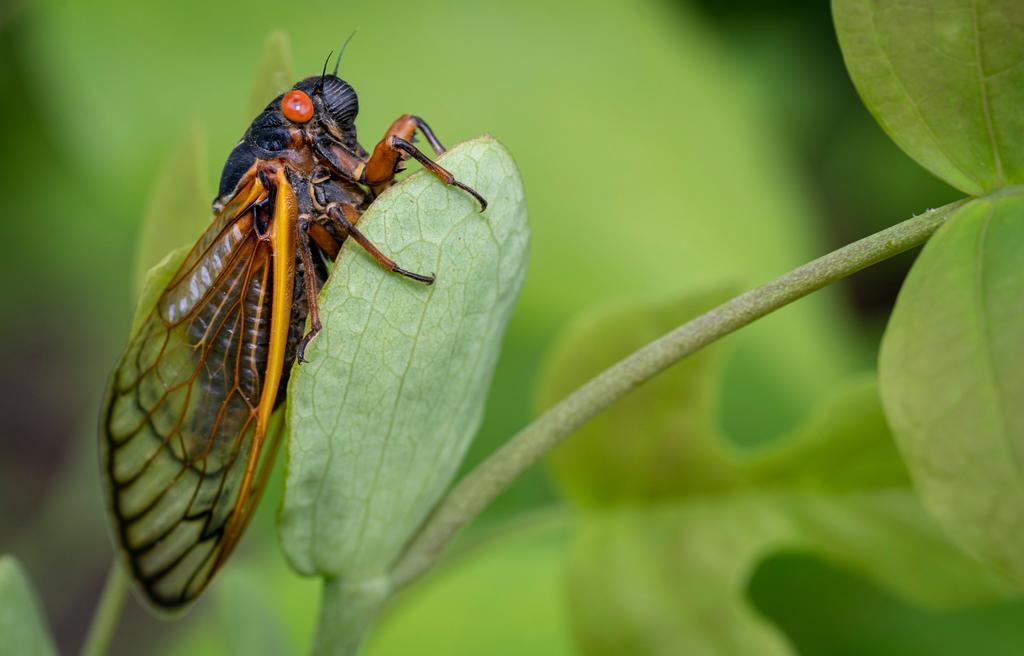For the first time since Thomas Jefferson was president, broods of 13- and 17-year periodical cicadas are emerging from the ground at the same time. The fate that awaits some of these periodic cicadas—a fungal infection that hijacks their behavior and destroys their genitalia — sounds like the script of a bad zombie horror film. The culprit (or villain) is the entomopathogenic fungus Massospora cicadina.

While most entomopathogens kill their host before releasing their infectious spores, M. cicadina is one of the few species that increase spore dispersal by hijacking their host’s behavior and keeping them alive while sporulating (1). The manner it uses to do this is both gruesome and fascinating. If you can stomach some details of insect sex and dismemberment, read on.
M. cicadina —A Fungal Zombie Maker
M. cicadina is the only known pathogen uniquely synchronized to periodical cicadas’ life cycle. Cicada nymphs are infected by M. cicadina spores as they emerge from the ground. (1). This is the first stage in a two-stage life cycle. While these “stage I” nymphs develop into adults, the fungus grows inside them, producing haploid conidiospores. Shortly after the fully developed adult emerges from its exoskeleton, the fungal infection causes their abdomen to distend. Eventually the terminal abdomen segment— which includes the genitalia— falls off, leaving a dusty white spore plug in its place. At the same time M. cicadina modifies the infected cicada’s behavior, inducing increased mating signaling (1).
The hapless healthy cicadas that fall for these signals leave the encounter with nothing to show but a newly acquired M. cicadina infection. These cicadas become M. cicadina’s “stage II” victims. During this stage of infection, the fungus begins producing diploid resting spores, and the cicada becomes its tool for disseminating them. The infection follows the same course as “stage I”, resulting in the replacement of the insect’s terminal abdomen segment with a spore plug. The fungus uses these “stage II” individuals in two ways. First, the cicadas continue to show excessive mating signaling, thereby spreading the infection among their brood mates and starting the cycle over again. Eventually the infection reaches a point where the spore plug bursts open. When this happens, spores rain down on the ground as the cicada continues to fly around. These spores will lay in wait for years until the next brood of periodical cicadas emerges (1).
M cicadina Might Use Psychoactive Alkaloids To Modify Cicada Behavior
M. Cicadina is unusual among entomopathogens because it keeps its host alive and subverts their behavior to help disperse its spores. This process is highly beneficial to the fungus but sounds horrific for the host. The question of why infected cicadas continue to behave semi normally is not an easy one to answer. One piece of the puzzle might lie in the unexpected presence of the psychoactive amphetamine, cathinone, in the spore plugs of infected cicadas (2).
The obligatory life cycle of M. cicadina makes it hard to cultivate in the lab. This challenge, combined with the extended life cycle of its host make studies of this pathogen-host combination difficult. Although amphetamine effects on arthopods is not well studied, we know that low levels of amphetamine increase aggression in ants and alter feeding behavior in blow flies (Science Reports). Unfortunately, the mechanism of action that results in these behaviors isn’t clear. In cicadas, it is possible that the presence of cathinone could induce hormonal changes that result in “hypersexualizaion” of the affected individuals, resulting in the observed excessive mating signaling (2).
Historic Synchronized Cicada Emergence Offers a Once in a Lifetime Chance To Learn More
The synchronized emergence of two periodical cicada broods offers scientists a rare opportunity to study both these creatures and the entomopathogenic fungus that waits to hijack them for its own survival. For the scientists who study them, this is a once-in-a-career chance to observe both these insects and the fungus that preys upon them.
If you live in an area that is home to periodical cicadas, this is also your once-in-a-lifetime chance to hear and observe a very special cicada event. You can use this map (PDF) to see where broods of 13- and 17-year cicadas are expected to emerge.
If you find a cicada, a peak under its wings might tell you if it is just and insect or a fungal host.
References
- Cooley, J.R., Marshall, D.C. and Hill, K. B. R. (2018) Sci. Rep. 8, 1432.
- Boyce, G.R. (2019) Fungal Ecol. 41, 147–64.
